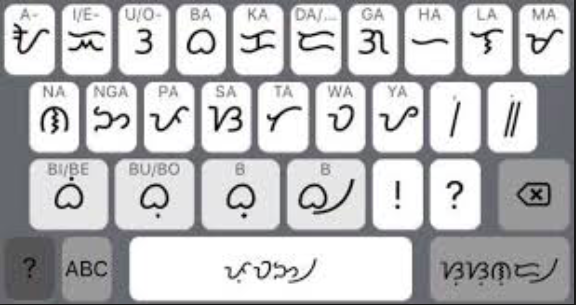
It’s quite possible to spend a long time around the Philippines without realising that the islands have their own unique script, Baybayin.
With its elegant curling form, it’s quite unmistakable once you notice it — and when you do, you may be surprised how widespread it is.
Don’t believe me? Take a closer look at that peso banknote, or study a Philippine passport.
It should be noted that Baybayin — sometimes spelt Babayin — is just one of many indigenous scripts that existed all across these (surprisingly literate) islands before the Spanish arrived.
It just happened that it was the writing used by the people who lived around the Manila area, who spoke Tagalog.
And it was Tagalog that formed the basis for the concocted language known today as Filipino. (By the way: It is something rarely admitted that the idea of a non-colonial lingua franca was an innovation of the Japanese Empire. The occupiers hated hearing hearing English or Spanish used to bridge the linguistic divides of the nation, and so dictated the invention of an alternative.)
For this reason, Baybayin gets much more attention than other ancient scripts such as Badlit (Visayas), Eskayan (Bohol) or Kulitan (central Luzon) — to name but a few.
Baybayin, like several other writing systems recorded in the islands, is an Indic script that was imported from Bengal sometime before the 8th Century.
The script employs an ‘abugida’ system — that is, consonants and linked vowels are written as a single unit. As a crude example, if our Roman script worked in a similar way, a word such as ‘bacon’ would be written as something like b’c*n — with the vowels ‘indicated’ rather than spelled out.
The survival of Baybayin (and other scripts) is partly due to the Jesuits, who documented just about every aspect of every place the colonial Spanish ever planted their flag.
It is also thanks to the use of stamped seals to cement business deals and other contracts — a habit that remains ubiquitous across Asia today.
But does it have a future, beyond its ‘token’ inclusion on banknotes and passports?
Well, maybe not as a day-to-day script, but it is commanding growing interest.
At a grassroots level, a generation of young artists and designers is finding inspiration in its elegant, swirling form, and it’s also starting to crop up more and more in street art (graffiti’s more respectable elder brother).
Also, as we have previously reported, there are moves currently passing through the House of Representatives to make it an official script of the Philippines. And in Boracay, local officials want to make it compulsory on all shop fronts to counter the growth in Chinese-only signage.
Who can see the future? Perhaps one day the Philippines — maybe renamed as Maharlika (a proposal backed by President Duterte) — will fully adopt this new/old writing system to add a whole new layer of bafflement for foreign visitors.
Follow our Facebook page for daily updates
…
